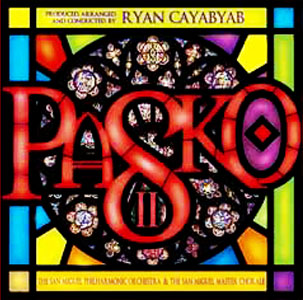Trivia about Filipino Traditions and Festivities in Celebrating the Holiday Season
Mano Po Ninong II, by Jes Pelino
In the Philippines, godparents play a very special role in a child’s life. Aside from giving spiritual guidance and acting as the second parents of the child, a uniquely Filipino way of practicing the concept of godparenthood is to visit godparents on Christmas day asking for blessings, thus the gesture of “mano po.”

Himig At Kulay Ng Pasko, by Jes Pelino
Features the festive carolling mood of children with colourful lanterns which is usually hang in every Filipino house. The practice which runs from 16th December until the Christmas eve, children enjoys carolling from one house to another singing beautiful Christmas songs and melodies.
Noche Buena, by Mamerto Ynigo .Filipinos love food, make no mistake about it. One of the best things about Christmas, aside from the twinkling lights and cool atmosphere is the bountiful food. Noche Buena, literally means good night, is often taken to mean the Christmas feast laid out after the Midnight Mass of Dec. 24. Traditionally, every Filipino family celebrates Noche Buena as a form of reunion and thanksgiving with all members of the family present in the celebration.
Karoling Sa Jeepney, by Jes Pelino
Carolling, which runs from 16th of December until the Christmas Eve in the Philippines, had its beginnings in the Middle ages. The word “carol” was derived from “carolen,” meaning to sing joyously.
Children singing joyous carols in jeepneys that travels along different routes in the city, is a common sight during the Holiday Season. The exotic jeepney is a post-war creation inspired by the GI jeeps that the American soldiers brought the country in the 1940’s. Enterprising Filipinos salvaged the surplus engines and came out with a unique vehicle of art. This ingenious creation is the Filipino version of jitney, the minibus that travels along fixed route. And although the jitney is found in many countries, it’s only in the Philippines that one can find a jeepney.
Simbang Gabi, by Jes Pelino The Official First Day Cover features Simbang Gabi. Christmas time in the Philippines is known as one of the longest holiday celebrations in the world. This is because of the “Simbang Gabi” or “Missa de Gallo” which runs nine days (hence the word novena) from the dawn of December 16 until Christmas Eve. The Christmas season does not end on Christmas Day. It continues until the day of the Three Kings, incidentally, “Missa de Gallo,” means Mass of the Roosters-literally.
Stamps featuring Filipino Traditions and Festivities in Celebrating the Holiday Season

Recent Comments